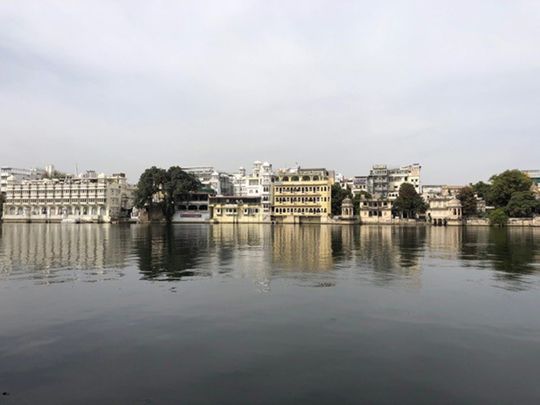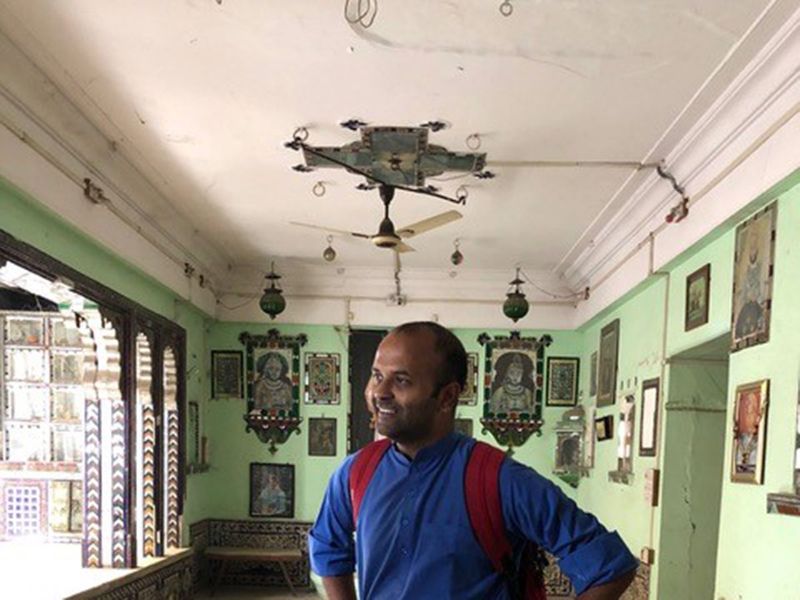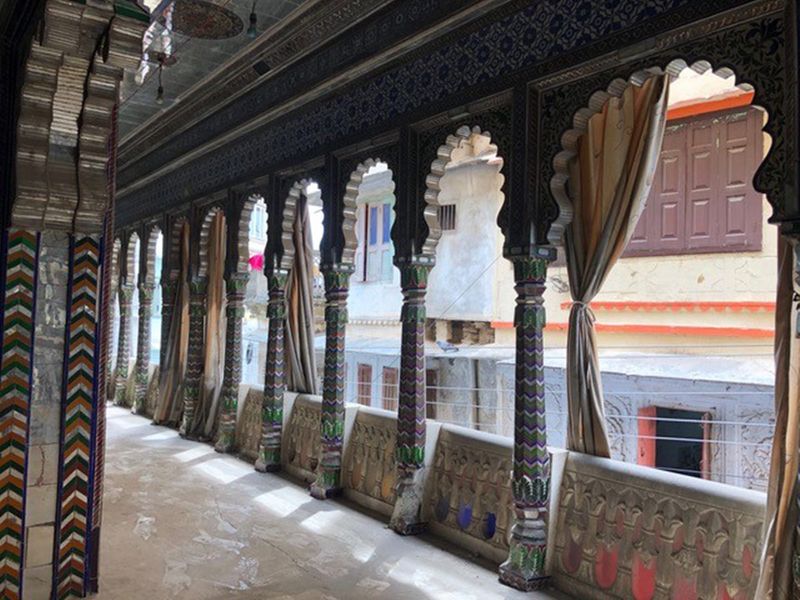
Every city has its character, its soul and its heart. Every city hums, buzzes and sighs! Every city has its flavours, fragrances and smiles! All of them evolve over the years, in fact, over centuries.
But, few exude the charm and the effortless elegance that a Rajasthani city does. Udaipur is no different — especially the old town of Udaipur.
A relatively young city surrounded by its much older cousins, Udaipur was founded in 1559 by Maharana Udai Singh II. The city is known for its languid lakes and extravagant palaces. But, it is the throbbing old town that lives on, along its labyrinth of lanes, by lanes and alleyways, through its confectioners, silversmiths and antique sellers and with its all brooding old havelis and temples that truly embody the Udaipuri heritage.
One could feel the Udaipuri spirit wafting through the air, in its fullness and in fragments, the moment one step into the old city through the Ghangaur Ghat — a massive marble archway facing the picturesque Lake Pichola.

With the exception of motor vehicles, power supply lines and other such sundry reminders of modernity, the city takes you on a time travel the moment you enter it.
And it is not just the architecture or the structure of the city in discussion here. It’s the way the place carries itself — the mannerisms, the occupations, the traditions, the aromas — that notifies the visitors that they are off to something mesmerising. The place sweeps you off your feet and takes you on an enchanting experience!
The lanes are narrow, but they are not claustrophobic, the buildings are old but they are not crumbling, the traditions are ancient but they are still thriving, being eagerly carried forward by younger generations, without being frowned upon.
Here you will still find craftsmen and women tinkering with silver and copper the way their ancestors did in the ancient times, you will find Ghunghat-clad women in all their finery selling trinkets and triflings, while the potters and engravers go about their jobs as if the Maharanas are still ruling in Mewar. Not to forget the halwais (confectioners), who make sweets with such artistry that you would rather place them in a museum.
Then there are havelis and old edifices in such abundance as if the rules of ageing don’t apply to them. This city is a paradise for heritage junkies, here you don’t have to look for heritage. Every corner holds a story, every bend opens up a new chapter, every gateway beckons with a tale, every roof a treasure trove of the bygone.
Imagine growing up in this old city, amidst the sights and sounds of its labyrinthine ways.

300-year-old mansion
Vishal Singh, a royal resident of the old town of Udaipur and a heritage activist, says the entire city, with its hundreds of lanes and alleys losing into each other, was like a playground for him and his friends.
“Every day, while walking to school and to our tuition classes and while coming back we would take different routes. In fact, we would never come back from the same route. It was great fun trying out different ways and losing ourselves in the web. Sometimes we would get lost, since all the lanes are interconnected, somehow, we would find our way back. It was so much fun,” said Singh, who is a scion of Dhai Bhaiji Ki Haveli, a 300-year-old mansion in the heart of the old city.
Singh’s great ancestor, Badanmal Singh was a nobleman with Maharana Shambhu Singhji, the mid-19th century King of Mewar.
Inspired by the fascinating heritage he grew up in, Singh developed a great passion to preserve and promote his ancestral legacy.

“Going around the haveli and walking through the labyrinth of pathways, I could see our heritage and culture taking shape everyday. I used to come across various artisans at work, especially the many jewellers around our haveli and I was fascinated by them. I would stand outside their workshops for hours observing the intricacies of their craft. I would admire their dexterity in making all the ornaments,” said Singh, founder of heritage awareness initiative Wisdom Walk Udaipur.
Vishal Singh’s great great grandfather Badanmal Ji got this haveli as a gift from Maharana Shambhu Singhji around 150 years back and since then his family has lived here.
“Mine is the sixth generation living here. My interest in heritage is also the result of the inspiration I have drawn from the haveli as well as all the heritage around us. There is so much about the Udaipur heritage and history that people don’t know, so I thought of telling these stories and the best way of doing it was taking people on a walk through the city. That is how ‘Wisdom Walk Udaipur’ came into existence,” he added.
Apart from jewellers and potters, woodworkers and coppersmiths, whose artistry had a magical effect on Singh and his friends, the heritage activist also has some ‘sweet memories’ of growing up in Udaipur.
“Sweet shops in the city used to be special, there were so many of them. Unlike, what we have now, those shops used to be small and open, without any glass shelves etc. Sweets used to be made live and sold instantly,” said Singh, pointing to the few shops that still continue the old tradition.
Unlike in other parts of India, here heritage is not a dying object, desperately kept alive on a ventilator.
In Udaipur, heritage is living and growing with the city dwellers, looking after its people as much as they are looking after it. And that friends, is a rarity!












